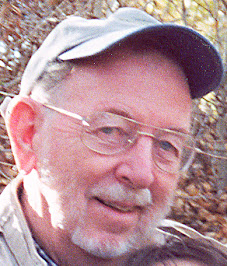(Sent as letter to editor at Valley Times-News, July 30, 2016)
Probably the closest the world has come in the past to
nuclear annihilation happened during the Cold War when one of the global nuclear
superpowers began placing potentially nuclear-armed missiles close to the other
nuclear superpower’s borders. Both countries had plenty of ICBM type nuclear
weapons, but a launch on either side of these over-the-Pole intercontinental missiles
would be detected by the enemy country’s radars and allow at least thirty
minutes for that country to launch its massive counter-strike before its own
cities and missile bases were hit and destroyed.
Thus we had Mutually Assured Destruction. MAD, yes. But it
can be plausibly argued that MAD prevented nuclear war. To launch a
first-strike nuclear attack under those conditions would be suicidal. Placing nuclear-tipped
missiles so close to the other country’s borders, however, would cut the
warning time drastically, thus possibly allowing a first strike that would
destroy the enemy country’s missile bases and cities before that country could
launch its counter-strike.
Understandably, the “enemy” country so threatened began
top-level negotiations with the other superpower to withdraw those too-close
missile sites. The “enemy” country also began to deploy its military forces to
prevent any more of those dangerous shorter-range missiles from being emplaced.
That was when the world came within seconds of total nuclear war. The two
opposed military forces were also nuclear-armed, and when they went head-to-head,
on one side one commander, fearing his unit was about to be destroyed, ordered
the launch of a tactical nuclear weapon.
That commander was in fact mistaken about the tactical
situation; something that we know often happens when even competent and usually
clear-minded military officers are blinded by “the fog of war.” His mistaken
order, if carried out, would almost certainly have triggered an exchange that
would have spun out of control, with disastrous consequences for both
countries, and indeed for the whole world.
Fortunately, his mistaken order to launch a nuclear war was
countermanded by a superior officer who happened to be present. And the top-level negotiations ended with
both sides agreeing to pull back from threatening each other in such serious
ways.
 |
| Captain Vasili Arkhipov and his wife Olga |
In this story, which took place in October of 1962, the
“enemy” country was the U.S. and the other country the Soviet Union. Those
dangerously too-close missiles were being placed in Cuba. The U.S. had already
placed similar missiles in Turkey. The officer who said No to nuclear war, who
the whole world should be honoring but is mostly and sadly forgotten, was
Soviet navy Captain (later Admiral) Vasili Arkhipov. You can see a PBS docudrama about the story
at https://www.youtube.com/watch?v=4VPY2SgyG5w
 That was then. Now, the story is being re-enacted, the
“enemy” country now being the Russian Federation, not the U.S. It is the U.S.
(aka NATO) placing missile sites too close to the “enemy” country’s borders.
The “enemy” country’s leader, Vladimir Putin, has called for top-level
negotiations, and made a plea to international journalists to understand and
fully report on the deployment of so-called anti-missile sites along and near the
Russian border, which he reasonably points out as “upsetting the geostrategic
balance of power, which used to exist,” in effect threatening Russia with
annihilation in a first-strike attack. He says, “From what I can see, we are in
grave danger.” You can watch his speech (with English captions, about 12
minutes) at: https://www.youtube.com/watch?v=CWZtyXHcUCo
That was then. Now, the story is being re-enacted, the
“enemy” country now being the Russian Federation, not the U.S. It is the U.S.
(aka NATO) placing missile sites too close to the “enemy” country’s borders.
The “enemy” country’s leader, Vladimir Putin, has called for top-level
negotiations, and made a plea to international journalists to understand and
fully report on the deployment of so-called anti-missile sites along and near the
Russian border, which he reasonably points out as “upsetting the geostrategic
balance of power, which used to exist,” in effect threatening Russia with
annihilation in a first-strike attack. He says, “From what I can see, we are in
grave danger.” You can watch his speech (with English captions, about 12
minutes) at: https://www.youtube.com/watch?v=CWZtyXHcUCo
We don’t know the rest of the “Now” story. I hope it will
end as happily as the 1962 version, with successful top-level negotiations. But
so far the U.S. seems much more interested in ratcheting up both economic and
military pressure on Russia. So the situation is extremely dangerous, with too
many opportunities for disastrous miscalculations and mistakes up and down both
chains of command. If the Russians reasonably perceive that their national
security is under threat, possibly even by a devastating first-strike attack,
they reasonably will have to consider deploying their own military in some way to
oppose and defeat that threat, and possibly launching their own “defensive” first
strike.
For the above and for other reasons, William J. Perry, former
Secretary of Defense under President Clinton, says we are closer to nuclear
annihilation now than we ever were during the Cold War. Perry, a scientist who
worked on nuclear issues at top levels starting during the Cuban Missile Crisis
of 1962, knows what he is talking about. His book is titled My Journey at the Nuclear Brink. You can
read a review in Military Times: http://www.militarytimes.com/story/military/pentagon/2015/12/29/former-pentagon-chief-perry-nuclear-dangers-growing/78015460/.


